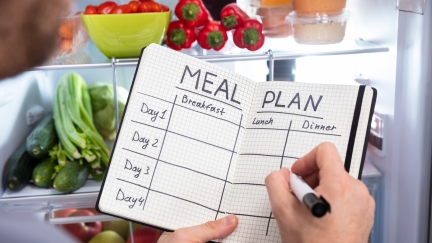
Growing, raising, processing, and delivering food uses resources such as water, land, fuel, and packaging materials. These processes also contribute to air pollution and greenhouse gas emissions. When food spoils or is thrown away before we eat it, the resources that went into creating the food are wasted. The food takes up space in landfills and releases greenhouse gases as it decomposes, rather than nourishing people or helping alleviate food insecurity.
Wasted food is a problem across the country. National nonprofit ReFED estimates that 38% of all food produced in the U.S. went unsold or uneaten in 2021, representing a $473 billion economic loss. Furthermore, wasted food is a signification contributor to climate change, responsible for at least 2% of all annual U.S. greenhouse gas emissions (U.S. EPA, 2021).
Preventing wasted food has:
- Economic impact: A family of four in Minnesota could save $1,500 a year by reducing their wasted food.
- Environmental impact: Food makes up 18% of landfills in Minnesota, where it breaks down and produces methane, a greenhouse gas with heat-trapping potential 25 times greater than carbon dioxide.
- Social impact: One in nine Minnesotans experience food insecurity that could be alleviated by food rescue efforts (Hunger Solutions Minnesota).
Most thrown-out food could have been eaten
The majority of the food Minnesotans throw out — about 62% — could have been eaten or donated, according to an MPCA-commissioned study of solid waste in 2019 and 2020. The waste composition study is the first in-depth exploration of how much of each type of wasted food is in our trash.
Food and compostable paper and packaging make up a quarter of everything households and businesses throw in the trash. Within that category:
- 40% is food that could have been eaten at some point before it spoiled
- 6% is unopened and unexpired food that could go to people in need
- 25% is inedible food scraps ideal for composting, such as vegetable peels and egg shells
- 24% is paper and packaging that can be composted alongside food scraps
The MPCA’s goal is to cut the amount of food wasted in Minnesota in half by 2030, using 2013 numbers as a starting point.
Take action
Consider small changes in daily behaviors:
- Plan your meals in advance and buy only the amount of groceries you know your household can eat.
- Try to buy food directly from local farmers or grow your own food to get fresher food you'll be more likely to eat.
- When going out to eat, look for right-size portions or share a dish to avoid ordering too much food.
- Save leftovers in the fridge or freezer instead of tossing them and look for creative ways to reuse those leftovers.
- Share extra food or donate it to a local food shelf or food rescue program.
- Bring your food scraps to an organics collection site, participate in a curbside organics program, or compost them in your backyard.
The U.S. EPA offers tools for individuals and communities to “help them keep food out of landfills and money in their pockets”: